Nissan Autonomous Cars: We talk Self-Driving with R&D chief Carla Bailo
Nissan's self-driving car technology works, but when will we see the first autonomous vehicles on the road, and how do you coax keen drivers out from behind the wheel and into trusting their AI chauffeur? Cars that can drive themselves are, many believe, the answer to cutting road-related fatalities and making better use of highways, but it raises challenges beyond those the industry has traditionally faced about "normal" transportation. We talked with Carla Bailo, president of Nissan Technical Center North America and senior vice president of NNA R&D Americas, at Nissan 360 this week about where the company's first real-world trials, the similarities and differences between Nissan's approach and Google's, and why one of the biggest selling points might well be the promise of a good cup of coffee.
Perhaps unsurprisingly, having just had a great experience effectively ignoring the controls in Nissan's prototype autonomous Leaf EV, our first question was when Bailo thought we might expect to see self-driving cars up for sale. Equally unsurprising, there's no definitive answer: in fact, the R&D chief suggested, it could be a demographic not usually associated with adopting new technology that actually gets to enjoy driverless cars first.
"The "when" depends on the level that you want. If we wait for a fully-autonomous vehicle that can go on any road surface, anywhere in the United States, we'll be waiting a long time" Bailo pointed out. Instead, Nissan is looking to roll out the technology in a piecemeal fashion. "If we think of it as an iterate process; if we start with, maybe, controlled communities or controlled areas, with designated lanes, then you can see that the "when" isn't that far away."
"Already, two states have passed legislation – Nevada, and California – when you think about it, it's not so odd, because one of the true benefiters of the autonomous vehicles will be the elderly, and Nevada has a lot of retirees. If you think of a controlled environment, let's say an adult community that's pretty well self-contained, people aren't able to drive – they've lost their freedom – they can simply order a car from a stock of cars in that contained community, and say "Okay, I want to go to Walmart; I want to go here, I want to go there" and the car comes to their condo and off they go."
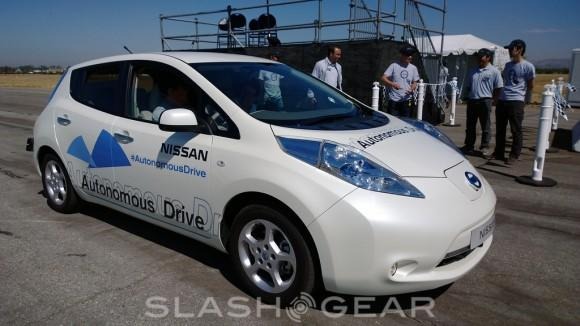
A centralized garage of autonomous vehicles, rather than each individual having their own car, is something that has been suggested before as a benefit for the self-driving technology. However, it also butts heads with one of the longest-standing principles of car ownership: the idea of having your own unique freedom, and the bond between driver and vehicle. To address that, Bailo says, Nissan is looking at how the cars themselves could better tailor themselves to each individual user, so that even though they might share it with their neighbors, their experience would be unique.
"We're looking at a concierge or valet concept, where the car knows you, it knows what you want" she explained, with the electronic booking systems probably responsible for also keeping a record of passenger preferences. "This car also needs to know as an extension of you: are you cold, are you hot, do you have long legs and need the seat back? It should know you, and be able to adjust to you."
That may be a lot of work and demand a change of attitude from car manufacturers, she concedes, but it could also rejuvenate the auto industry. "It really could lead to a whole different business model for the automotive companies" Bailo predicts. "Then, the compelling question to me is, what would make a person or a community buy my cars over someone else? Is it going to be a matter of the convenience of the system or the business model? Is it going to be because, gee, I have a nice espresso maker in mine, and they only have a coffee pot? So you really have to think about the styling of the car, and how the customer will interact with the car."
Home comforts like espresso machines might seem far-fetched, but as the core car technology improves there'll be more and more room for unusual options. "[A coffee machine] takes up space, but if you eliminate... this is the clever thing to me, by the time you have fully-autonomous vehicles that never crash – they move like fish in the ocean, you never see them crash into each other, they utilize every bit of space" Bailo points out. "When you have that, I don't need all the airbags, I don't need all the extra sheet metal and the reinforcement in the doors, I'm going to free up a lot."
"Autonomous EVs is one of the first places we'll see in the market. I think we're going to see them working hand in hand. I think we're going to continue to bring down the cost of EVs, improve the efficiencies. You're going to see more zero-emissions – be it hybrid, or EV, or plug-ins, or fuel-cells, it's coming. It's what we have to do for the globe" Carla Bailo, President Nissan Technical Center North America and SVP of NNA R&D Americas
Of course, there lies perhaps the biggest issue with autonomous vehicles: integrating the futuristic fleet with the hundreds of thousands of cars that already populate the roads, when both don't speak the same language. In order to have room for, say, your espresso machine by dropping the extra safety bulk, first each car needs to be confident it can co-exist on the highway with the rest of the traffic. That, Bailo says, is one of the key challenges, and the reason why Nissan isn't trying to do everything itself.
"Fundamentally, V2V (Vehicle to Vehicle) communication, V2I (Vehicle to Infrastructure) communication, fully-autonomous vehicles are going to be most efficient when all cars are linked, because I need to know when the car six vehicles ahead of me is slowing down so we don't have that chain reaction and there's a big collision" she explained. "So this is what we're discussing now with Nissan, with others: how can we retrofit cars, older cars – people are keeping cars ten years – how can we make sure they can communicate with each other.
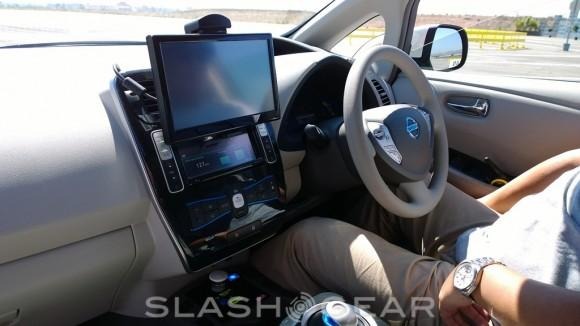
"Or, when it comes to rolling it out – and this is the "when" part – maybe it has to be in a very controlled part, whether that's of the state or of the city, where you can roll it out gradually until you can get to that point where it can exist everywhere. And that's going to take a lot of years, because if you think of rural America, it's going to take a lot of time before it gets there."
Communication between cars won't happen until communication between companies working on self-driving technology settle on a standard. That's something Nokia's HERE Research team highlighted recently when we spoke to them about the future of Smart Cities too, and it's the reason why any firm working on autonomous tech can't avoid some degree of collaboration. We asked Bailo to what extent her R&D division was working with other well-known projects, such as Google's, the work-in-progress results of which can already be seen driving themselves around US roads.
"Everyone's talking with everyone, but our Silicon Valley office, their whole purpose is to start working with start-ups, to forge these kind of partnerships, because to do it alone doesn't make sense" Bailo agreed. "We cannot have all of the intelligence in our company that we need to handle every element of the whole picture. Partnerships, and/or collaborations, are the key. In Silicon Valley, they're going to collaborate with universities, they're going to collaborate with start-ups, maybe Google, maybe Yahoo, I don't know. Google, Apple, Yahoo, they're all big behemoths, and they all have different technology: our technology is different to Google's. Does that mean we'll never work with them? I don't know."
The challenge of finding a common language is made more complete by the fact that, as Bailo highlights, each project takes a different approach to self-driving cars. Still, for all the talk of collaboration, that doesn't mean the Nissan exec isn't confident that its technology has core advantages over those adopted by other teams.
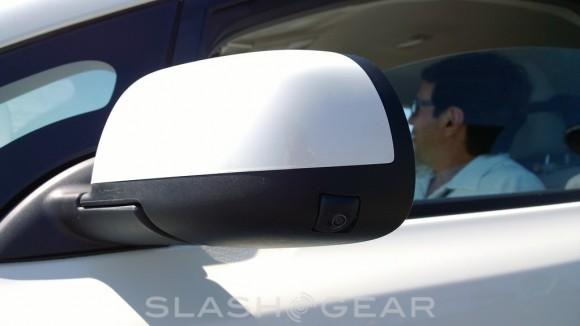
"We are using all options: we have cameras, we have laser, we have radar. Most of it is being built off of tech we already have, and then from there putting these lasers and radars all around the vehicle, it's easy to integrate and build into the product. And, that allows us then to have the vehicle be thinking like a person" she explained to us. Competing systems may, perhaps, lack that human touch, Bailo argued.
"If you were out on the autonomous course today, you saw when a person came out the car went around? Google, for example, their current system – which is based on Google Maps fundamentally – they would in that situation simply say "autonomous driving stop" and the driver has to grab hold of the wheel. And we're trying to avoid that situation, because we don't know how to wake up the driver, how to make them respond: really, autonomous should be autonomous. And it will be various stages, because right now we don't know how to make the car behave like a human in every situation. So it'll be rolling it out in perhaps controlled environments."
Nissan Leaf EV autonomous prototype:
Although Google may have got its cars to the highways before Nissan, the US-based team isn't far behind now. "As we're developing, we're also putting the car in controlled environments" Bailo revealed to us. "We're in Sunnyvale, we're working with the city of Sunnyvale, we'll start driving cars around there probably by the end of this year, perhaps early next year, that's the target."
"If we can improve the efficiency of how we're using the road space which, right now, even during rush hour, the data says 30-percent of the road isn't being used at any given time, because you've got the bunches and then the free-flow. If we can fix that, we can then use that to build fewer roads. The road was designed so we could have X-amount of wake. If we narrow that wake, we can narrow our lanes; we can have more lanes for our real-estate. We can be much more efficient. From an infrastructure point it's a huge win" Carla Bailo, President Nissan Technical Center North America and SVP of NNA R&D Americas
Instilling a human understanding of how the roads work takes more than engineers and programmers, Bailo's division discovered. "We'll learn from [road trials], we'll keep iterating, improving the algorithm, learn more about the human psyche, and how we think" she said, "so we have the human engineering group working with us, we have physiologists, even anthropologists are needed [because it's a culture shift]."
Engineers, anthropologists, and psychologists might not be the most common of bedfellows, but Bailo says it was clear to her that, as someone technically-minded, some of her strengths might also be hinderances when it came to a new world where driver roles are changing considerably.
"I'm a mechanical engineer, and we are so logical, we think step-by-step-by-step-by-step. Most human brains don't think that way" she commented. "If you look at our [infotainment] systems in cars today, they make perfect sense to us: okay, you go to this menu, to this menu, to this menu. But most people just say "hey, I want to listen to a Pandora exercise station,"; they don't want to go search, and find, and program. But someone who has a different discipline will say, "no, most folks don't think like you do," and they can open us up to really finding the right solutions."
Nissan isn't counting out any specialists, no matter how rare it might be to find them working alongside the car company's more traditional staff. "We're learning from zoologists as well," Bailo laughed. "You think about, going back to the fish in the ocean, they can feel and sense each other. So what can we learn from what they're doing? What can we learn from the aerodynamics, even, of different birds? I think we're on the right track, but it's a huge shift in engineering."
"You have to break out of the normal process of doing business. Engineering is usually very regimented: we have all these procedures, and rules, and standards, and they're all very important in normal cars. But we're not talking about normal cars here; we want cars that think like a human. And so we have to break out of that normal thinking way, where we're very deliberate and there are milestones judged on certain criteria. We have to break that and judge by different criteria" Carla Bailo, President Nissan Technical Center North America and SVP of NNA R&D Americas
Technically, Nissan's self-driving Leaf ticks many of the boxes, albeit when limited to a more controlled environment. The car, as we found out ourselves, is able to navigate by itself, respond to road markings and signs, react safely to other traffic and pedestrians, and generally free up whoever is in the driver's seat to effectively ignore what's going on around them.
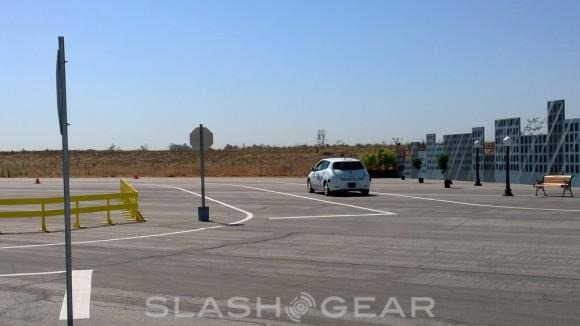
Beyond that, though, are equally pressing issues like safety and driver-perception, and that's where a sizable chunk of Bailo's focus – and that of Nissan R&D as a whole – lies. Safety, and preventing those with bad intentions from coercing autonomous systems to do things they shouldn't, is perhaps the exec's biggest concern, though Nissan is also weighing in with its opinion on things like how cars will eventually communicate with each other.
"There's a couple of things [about safety]. We're concerned about frequency range – right now there's a dedicated frequency range for Vehicle-to-Vehicle – but they're talking about opening it up, and we're going to fight against that. The dedicated frequency range for V2V is essential" Bailo commented. "But I'm not so much worried about the problems in the cloud, so to speak, as much as I'm worried about being able to keep hackers out."
"This is the part that we have to be very, very careful about, because certainly people will try to hack us, they will try to control the car from afar, it will happen," she predicts. "So what are the safeguards, what are the passwords, what will protect the autonomous driver from this sort of takeover?"
"And that's being discussed at the highest level, at the government [not just Nissan], everyone has to be concerned about that. Eventually there'll be autonomous busses, there'll be autonomous semi's, everything. It just takes one person to hack the code, and all the cars would be going off a bridge somewhere; it sounds really futuristic and out-of-space but it's not, it can happen. And we have to make sure we have the data systems in place, and the protection systems in place, so that won't happen."
Even if the safety box can be ticked, then there's persuading car enthusiasts to give up their driving gloves and hand over the keys to a computer. From Bailo's perspective, the best way to do that is to highlight the potential safety benefits. "The way we convince people that autonomous cars are the way to go is that we talk about zero fatalities" she told us. "And the way that you bring people around, they say "oh no, I'll never give up driving my car." And you say, okay, but do you know how many people die each year from automotive accidents?"
"And people have numbers, they're all over the map. And you say, what should that number be? And they say, oh, 200, 100; they come down significantly from the number they first guessed. And how about your family, what would be the right number? Zero! Of course, so then, the brain clicks, gee, maybe autonomous cars that don't crash into each other might not be such a bad idea, because that's zero for my family."
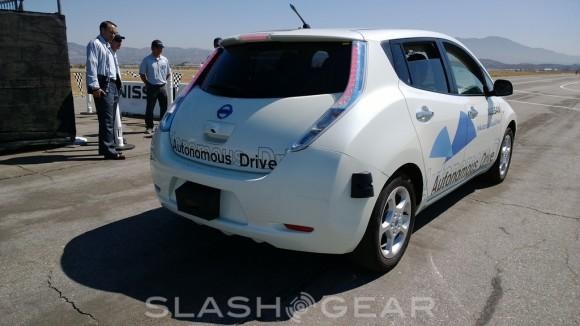
The pace of development in automotive is notoriously slow in comparison to the IT industry, new cars taking 3-6 years to arrive when smartphone owners are used to seeing the flagship handset they just bought become outdated in a matter of months. Bailo predicts, though, that some of that pace of innovation will be what propels self-driving cars into the mainstream, a more traditional segment of road users lagging behind, and bracketed by those either not currently well served by the existing automotive model, or more comfortable with a more intertwined relationship with technology.
"In my mind, this is vision for autonomous, plus it frees up for those people – the blind, the handicapped – who have never had the independence they crave, plus the elderly. It just makes the car a part of you, just like your mobile devices today, though automotive people today hate when I say that. But this is reality, this is how the younger people are thinking, and going to a place becomes a social event" she forecasts. "So, the future of autonomous is coming, but how deep, how fast, who knows. We have definite ideas – our CEO has said ten years – and we're working to that end."
Chris Davies contributed to this report
